As a dedicated skincare addict, I own quite a few never-ending bottles of exfoliating acid toners that I can’t really use up fast enough. They’ve been sitting around going dusty, and I was prepared to gift them to my grandchildren one day.
Enter Tracy Robey, of fanserviced-b. Tracy, a longstanding member of the online skincare community, has kindly performed some experiments involving splashing acids on various body parts – and wrote articles on some that worked. One of them: your armpits.
Related: The Essential Guide to Exfoliation
I was initially skeptical that acid exfoliants would have any effect. I’ve never had strong body odour, since I’m of Chinese heritage and have the gene that makes your armpits smell less.
My sister seems to have a stronger version of it, and has worn the same cotton t-shirt every day for a week while volunteering for a university society during an Australian summer with no problems.
But I do have a few tops that make my armpits mustier than usual, and I’ve been trying acid exfoliants with those (specifically The Ordinary 7% Glycolic Toning Solution, Pixi Glow Tonic and Paula’s Choice Clear Acne Body Spray). Surprisingly, it seems to work pretty well.
But how does it work? Let’s talk about the science of body odour.
Related Post: Should you avoid aluminium in deodorants? The science (with video)
The Science of Smelly Armpits
Body odour – that characteristic smell emanating from human armpits – requires two components:
- Odour-forming chemicals in certain types of sweat
- Bacteria
The chemicals in your sweat don’t turn smelly until bacteria transform them into that characteristic whiffy scent, and without the chemicals, the bacteria have nothing to work with.
There are few variables that affect how much and what, um, flavour of body odour your pits will generate…
Chemicals in Sweat
There are two main types of glands that produce sweat: eccrine and apocrine sweat glands. Eccrine sweat glands (found all over the body) produce watery sweat that mostly just contains salt.
Apocrine sweat glands are the culprit in BO. They’re usually found in the smelly areas of your body (i.e. your armpits), and produce sweat that contains both odour precursor chemicals, and nutrients that can feed bacterial growth.
However, in sweat, the odorous compounds are chemically bound to other things (amino acids) that stop them from being smelly. The bigger a molecule, the less likely it’ll be able to turn into a vapour that can fly out of your sweat and into your nose. In general, water-soluble substances are also less able to turn into a vapour. Bacteria have to come along and chop off the bulky water soluble amino acid part, before the odour chemicals are free to be smelly.
Related Post: What is clinical strength antiperspirant deodorant?
Here are the main chemicals responsible for BO, shown after bacterial chopping, along with descriptions of their odours so you know exactly what you’re smelling:
- Branched fatty acids:
- (E)-3-methylhex-2-enoic acid (3M2H) – cheesy, rancid, “goat”
- 3-hydroxy-3-methylhexanoic acid (HMHA) – spicy, cumin-like
- Sulfanylalkanols:
- 3-methyl-3-sulfanylhexan-1-ol (3M3SH) – onion, tropical fruit
- Odoriferous steroids (probably contribute much less to BO than the first two groups):
- 5α-androst-16-en-3-one – musk
- 5α-androst-16-en-3α-ol – urine, musk
(For a disturbingly thorough catalog of armpit chemicals, check out this PhD thesis.)
The East Asian Genetic Thing
As I mentioned before, East Asians have a weird genetic quirk that makes them less prone to smelly BO. In particular, it’s the ABCC11 gene.
East Asians frequently have a particular variation (538G>A) that causes apocrine sweat glands to produce less of these odour-causing compounds. It’s estimated that more than 95% of East Asians have this variation. Europeans and Africans rarely have it, leading to stronger armpit odour.
However, straight-chain fatty acids, which have a faint sour smell, are still present in East Asians and others with the “less BO” gene.
(Note: the lack of BO does come with a potential downside – some studies have found that body odour from people genetically different from you can smell more attractive, which can result in healthier offspring. However, in the modern world, this mechanism is also mixed up by things like deodorant and hormonal contraceptives, so it’s questionable whether this is still an advantage. Interestingly, the “less BO” gene also causes dry white flaky earwax!)
Other Sweaty Variations
As well as the ABCC11 gene, the ratio of these odour precursors in your sweat can change with other factors like age, diet and sex. One study done in Switzerland found that women produced more 3M3SH, while men produced more HMHA. The “musky” odoriferous steroids are also much lower in females than males.
Other components in sweat might also influence body odour. The ABCC11 gene also leads to lower protein in sweat, so there’s less food for bacteria. The size and number of apocrine sweat glands also makes a difference (children don’t produce much apocrine sweat, males have larger glands than females even though females have more glands in total, East Asians have fewer apocrine glands).
Related Post: How do deodorants work?
Armpit Bacteria
As well as the odour-causing chemicals in sweat, you also need to have the right bacteria on your armpit skin. In particular, it’s corynebacteria that produces the enzymes required to break the chemical bonds that will free the characteristic BO smells. Staphylococci are also involved, to a lesser extent.
The bacteria on the surface of your skin don’t differ with the ABCC11 gene, but they can vary a lot between individuals, influencing the relative strengths of notes like “rancid”, “cheese” and “onion” in your individual… bouquet.
There are a few things that can influence your armpit bacteria. Anti-perspirants reduce how many bacteria are there, and the balance of species present, possibly because there’s less sweat around so that bacteria have a less optimal, drier environment. Potentially, it could also be the fact that they change the pH in the area. Which brings us to the whole “splashing acids on your pits” discussion…
pH and Body Odour
So – how could an acid exfoliant product change your armpit’s ability to create stink?
Armpit skin usually has a pH of around 5.5-6.5, which is generally higher (less acidic) than other parts of your skin. As you might already know from discussions about cleansers and skincare, pH can have a big effect on the bacteria that thrive on your skin.
Related Post: All About Cleansing & How to Choose a Gentle Cleanser
So changing the pH could potentially decrease the stink-causing bacteria on your skin, or decrease their ability to enzymatically cut the chemical bonds to produce odour chemicals.
Acid exfoliants generally have a pH of 3-4, lower than normal armpit pH. Although there’s surprisingly little on changing the pH of armpits as a way to tackle body odour, there’s some evidence that suggests lowering pH (making it more acidic) could work:
- In a lab experiment, one strain of Corynebacterium was incubated for 6 hours in different pH sweat. The strongest smell was produced at pH 6, but at pH 5 and below there was no detectable smell. There was also no smell detected at pH 8 or higher.
- One study found that armpit pH was lower in antiperspirant users than non-antiperspirant users (median pH 4.6 vs. 6.3 for females, median pH 5.2 vs. 6.3 in males). The antiperspirant users also had about 50 times less bacteria than non-antiperspirant users – however, it’s unlikely that the pH change was solely responsible for this.
- In one study using triethylcitrate (which could perhaps turn into citric acid) in a pH 5.5 deodorant didn’t change armpit pH, and a small decrease in armpit pH wqs actually correlated with more odour.
- Aluminium chlorohydrate, a common ingredient in antiperspirants that’s active against corynebacteria and staphylococci, has a low pH.
In the only study on the effect of a low pH deodorant, three Eucerin deodorants at pH 5 containing aluminium chlorohydrate were found to reduce the pH of armpits to 5.0-5.5. There was less stink, but since aluminium chlorohydrate is also an antiperspirant that reduces sweat by blocking sweat glands, it’s hard to link it directly to the pH-lowering effect.
Acid Exfoliants as Deodorants
So do acid exfoliants work as deodorants? Anecdotally, it’s worked for lots of skincare addicts, including me.
The products I’ve tried so far are The Ordinary 7% Glycolic Toning Solution, Pixi Glow Tonic (iHerb link) and Paula’s Choice Clear Acne Body Spray. To use them, I simply splash a little acid exfoliant on my armpits after I shower using my hands, like I would for my face. If you prefer using a cotton pad, that works too. You can also use presoaked pads, like Stridex BHA pads (also available at iHerb).
The biggest advantage for me is that it also acts on ingrown hairs. I’m a fan of multitasking products – anything that does more than one thing is a winner.
Acid exfoliants also fade hyperpigmentation, so if you have PIH from ingrown hairs or cuts from shaving it’ll help with that too. And if you have too much exfoliant lying around, it’ll help you use it up and minimise waste, plus acid toners can be quite cheap these days (looking at you, The Ordinary).
On the downside, acids can be irritating, and some acid products are sticky. It’s also possible that some products might contain “food” for bacteria, making them counterproductive. Acid exfoliants also don’t block your sweat pores, so they won’t control the amount of sweat you produce.
Like with any other exfoliants: start slow and with low concentrations, and don’t hesitate to pause what you’re doing if you sense irritation coming on. And perhaps try a few different formulas – it’s possible that oilier acids like salicylic acid (BHA) and mandelic acid might have stronger lasting power, since they’ll absorb into skin more easily instead of being quickly washed away by your sweat.
Related Post: The Essential Guide to Exfoliation
Final fun BO fact: Shaving your armpits seems to help with BO, since armpit hairs seem to act like these reed aroma diffusers.
References
James AG et al., Microbiological and biochemical origins of human axillary odour (open access), FEMS Microbiol Ecol 2013, 83, 527-40. DOI: 10.1111/1574-6941.12054
Troccaz M et al., Mapping axillary microbiota responsible for body odours using a culture-independent approach (open access), Microbiome 2015, 3, 3. DOI: 10.1186/s40168-014-0064-3
Urban J et al., The effect of habitual and experimental antiperspirant and deodorant product use on the armpit microbiome (open access), PeerJ 2016, 4, e1605. DOI: 10.7717/peerj.1605
Callewaert C et al., Deodorants and antiperspirants affect the axillary bacterial community, Arch Dermatol Res 2014, 306, 701-10. DOI: 10.1007/s00403-014-1487-1
Martin A et al., A functional ABCC11 allele is essential in the biochemical formation of human axillary odor (open access), J Invest Dermatol 2010, 130, 529-40. DOI: 10.1038/jid.2009.254
Troccaz M et al., Gender-specific differences between the concentrations of nonvolatile (R)/(S)-3-methyl-3-sulfanylhexan-1-Ol and (R)/(S)-3-hydroxy-3-methyl-hexanoic acid odor precursors in axillary secretions (open access), Chem Senses 2009, 34, 203-10. DOI: 10.1093/chemse/bjn076
Stenzaly-Achtert S et al., Axillary pH and influence of deodorants, Skin Res Technol 2000, 6, 87-91. DOI: 10.1034/j.1600-0846.2000.006002087.x
The products mentioned were provided as PR samples for editorial consideration; however, these are still my honest opinions of the products. This post also contains affiliate links – if you decide to click through and purchase any product, you’ll be supporting Lab Muffin financially (at no extra cost to you), thank you! For more information, see Disclosure Policy.
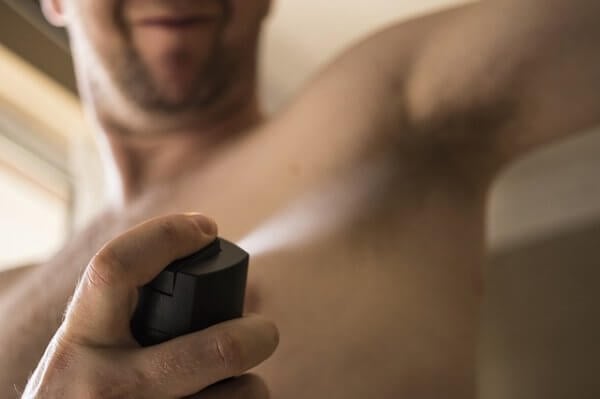
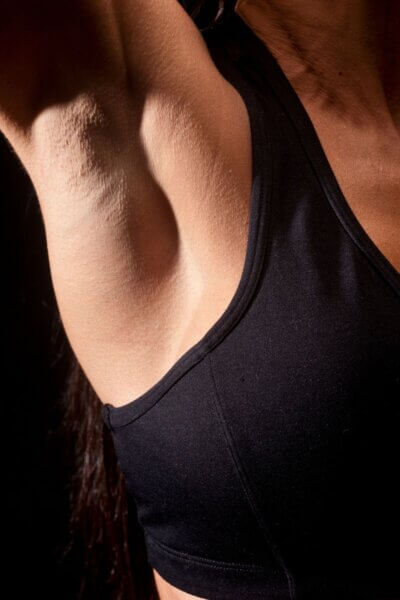
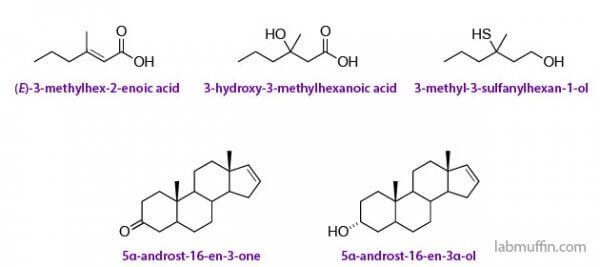


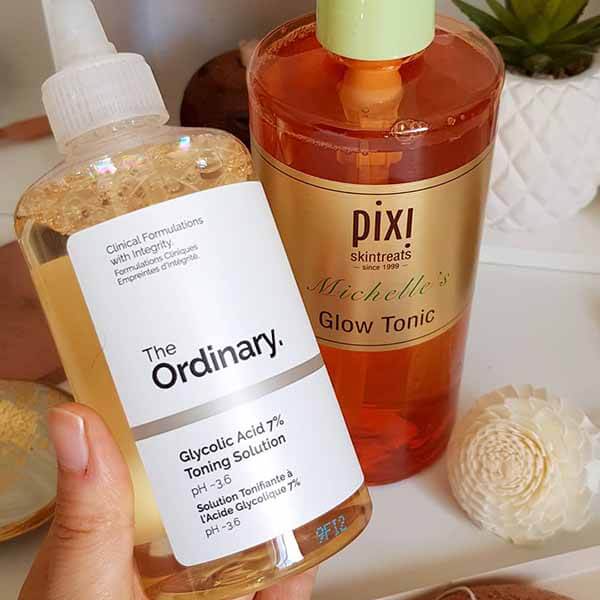
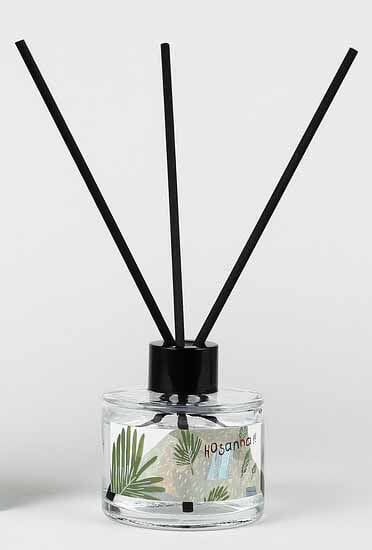
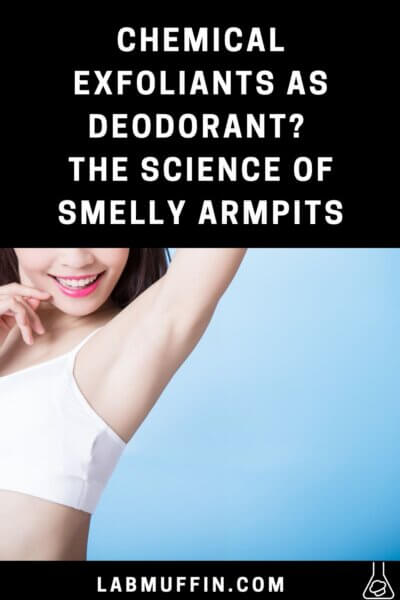


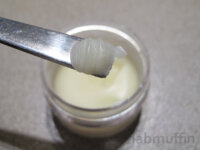
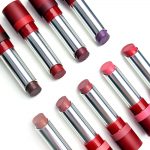
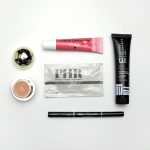

That is both the weirdest and at the same time the most interesting article on Body odor I have read. Not that I read many on that topic.
I do have a lot of pixi Glow Tonic at home that I will probably never go through, I will see if it works for me too.
Anne from Doctor Anne
Out of curiosity — are there any scientific studies on how continued use of AHA/BHA affects skin microflora in the long term? From what I understand, there are documented studies of antibiotics disrupting intestinal microbiota; gut bacteria can eventually recover and regenerate, but not all beneficial bacterial strains return.
Granted, skin functions quite differently from intestinal organs. I’m just wondering what overlap exists (if any) since they’re both dealing with bacterial ecosystems. Does inhibiting the stink-causing bacteria on your skin also negatively impact the presence/performance of other beneficial bacteria found on skin?
(FWIW, I use chemical exfoliants on my underarms & my anecdotal experience is quite positive. There’s just a small part of me that wonders what the trade-offs might be.)
Interesting thought. I think then we might need to ask ourselves the same with any perspirants or similar that is available all over the market. Since, as the post says, antiperspirant chemicals tend to have lower pH as well. 🙂
I have mandelic acid at home. Can you give me a simple diy toner mix for my armpit? Thanks
I use witch hazel as a toner. Would witch hazel apply here?
I tried using both my salicylic and glycolic acids as deodorant and they’ve both worked, as in completely odorless for 24 hours. Thanks for this post! I even tried using my normal deodorant on top of salicylic acid with the same odorless result. I used to have a mix of BO and deodorant smell after a long day, and now it’s nothing. Using Paula’s Choice 2% BHA Liquid and Alpha Skincare 14% Glycolic btw. And it is helping with my ingrowns too.
Glycolic acid did work for me for some days, I was so happy… then I had a horrible breakout and it took a long time for my armpits to recover.
Maybe I should try a different acid?
I’m Middle Eastern and can have strong body odor, specially before my period. Deep in summers when no anti deodorant works for me and all products start giving me itchiness (perhaps because of overuse) I spray diluted organic apple cider vinegar & it’s very very helpful both in getting rid of the persistent odor and the itchiness. It also has a temporary cooling calming that I enjoy. This post makes a lot of sense to me & I’ll try my other acids.
The analogy to the diffuser cracked me up. XD
Long time lurker btw. Keep up the great posts!
I am absolutely here for this article. I have struggled with underarm odor in the extreme since I was in high school. it’s something that always made me feel insecure and like I was the dirty kid. Looking back at this I think I was likely (and am still likely) not the only person in my social group struggling with this to some extent. I am always afraid that someone else will smell my underarms and it’s a constant worry for me. That being said, I can’t use strong antiperspirants because they block my pores too much and cause underarm cysts to form. Feels like I can’t win here! I’ve found that Crystal and Schmidt’s deodorants work the best for me so I use those every day, and after a shower I’ve started using my Cosrx AHA/ BHA spray before applying my deodorant. I have definitely seen a difference, though my problems are not completely gone. So glad to have found this article!!!
Me too, I’m afraid about this since a “friend” made fun of my BO:(
I re-purposed The Ordinary’s Azelaic Acid as a deodorant. It didn’t agree with my face, but it works perfectly for my underarms. If I am not particularly active, it can keep me odor free for to 2-3 days.
I’ve recently started to use The Ordinary’s vitamin c powder mixed with hydro boost body gel cream as a deodorant, and it’s been working great!
Hi, thank you for this! I’ve been thinking and researching a lot because I really have underarm problems. Just wondering if you still apply any moisturizer after you put the glycolic acid toner?
I don’t, but my armpits aren’t dry!
Im looking to make my own deodorant using acids such as mandelic or kojic acid instead of baking soda. What percent of these acids should I use as one of the active ingredients in thr formula?
I’m not sure about making a deodorant, but I do know the maximum concentration of kojic acid allowed in skin care is 1%. And for some people it may be irritating. So maybe 0.5% kojic acid? (Esspecially for everyday use). Maybe you can combine it with ascorbic acid since it combines well together.
I had some TO glycolic acId toner so I decided to try this but my armpits started to smell really bad the second I applied the toner.
Do you know why this could have happened? Its like something in the toner activated my BO 🙁